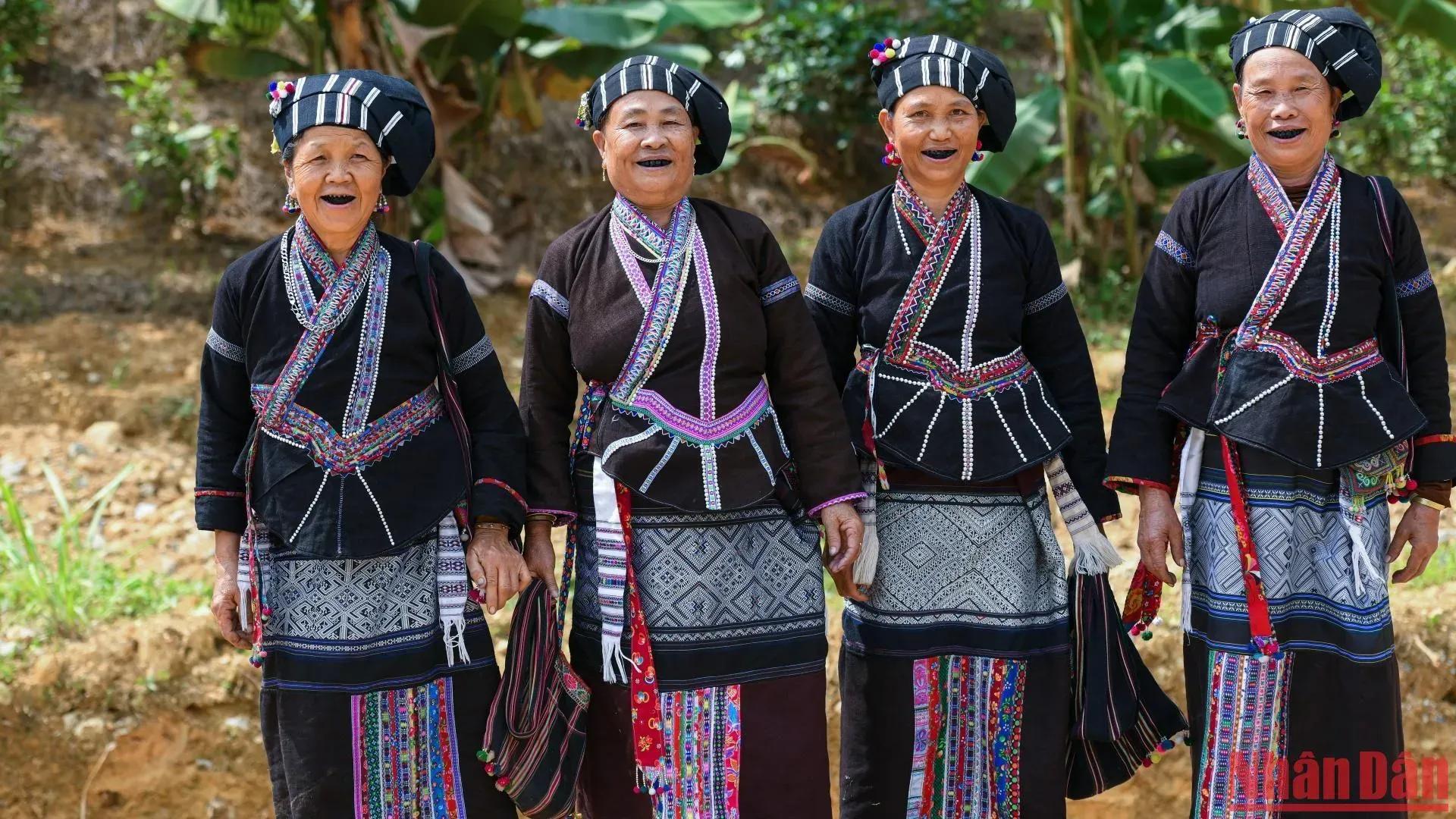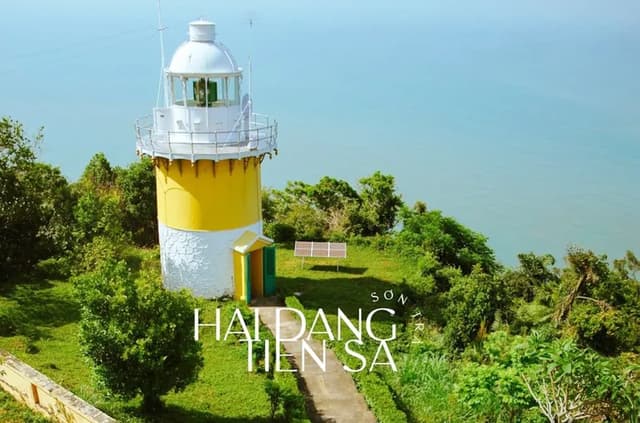Lu ethnic group - Northern mountainous culture
25/12/2024
Vietnamese ethnic groupsExplore the life and culture of the Lu people through their unique traditions in the mountainous region of Northwest Vietnam.

The Lu people were present in the Xam Mun area (Dien Bien) at least before the 11th and 12th centuries. Here, they built the Xam Mun citadel (Tam Van) and reclaimed many fields. Let's join iGuide.ai to learn about the Lu ethnic group in Vietnam according to reference information from the Vietnam Ethnic Committee!
Historical origins
Historical origin The Lu people were present in the Xam Mun area (Dien Bien) at least before the 11th and 12th centuries. Here they built the Xam Mun citadel (Tam Van) and reclaimed many fields. During the feudal war, the Lu people had to disperse everywhere, a small part of them fled to live in the Phong Tho and Sin Ho mountains. Basic research works all have a consensus on the history of the Lu people in Vietnam. In general, researchers all believe that they originated from the southwestern region of China, mainly from Yunnan province, moving into Vietnam before and after the first millennium AD. They were one of the earliest communities to appear in the Northwest and achieved a certain level of development in this area. During their existence and development in the Northwest, they had historical and social relations with many ethnic groups, especially the Black Thai community, led by land lords in occupying land, especially in the valleys, which were favorable for the agricultural economy of the mountainous region. They also had relations with the Lu community in China and Laos.
Geographic distribution
Today, the Lu people mainly reside in the communes of Ban Hon, Binh Lu, Na Tam, Tam Duong district (formerly Phong Tho district); the communes of Ma Quai, Nam Tam, Sin Ho district, Lai Chau province and a few live scattered, interspersed with the Thai people in Dien Bien district, Dien Bien province and Than Uyen district, Lai Chau province. The Lu people reside in relatively concentrated and isolated hamlet communities in low-lying areas at the foot of mountains and small valleys. In Lai Chau province, the Lu people reside in 17 hamlets in four communes and two districts, with the population of the hamlets being at least 19 households with over 100 people (Bai Trau hamlet, Ban Hon commune, Tam Duong) and the largest hamlet having over 120 households with over 600 people (Dong Pao hamlet also in Ban Hon commune, Tam Duong).
Population and languages
Population: According to the 2019 Census of 53 Ethnic Minorities, the Lu ethnic population is 6,757 people (of which 3,439 are male and 3,318 are female). Language: The official language of the Lu is the Lu language, belonging to the Tay-Thai language group and the Kra-Dai (Tai-Kadai) language family. The Lu people also use the official language in the countries where they live. The Lu ethnic group has its own language, creating a unique cultural identity. In communication between members, they still use the traditional language, and also use the common language (Vietnamese) to communicate with other communities. In addition, they also learn and use some languages of the Thai, Lao, and H'Mong people.
Traditional social institutions
In traditional society, each village has a leader called Tao Ban (village chief) elected by the people. He is a trustworthy person, good at business, responsible to the community, and has a voice in the local government system. Assisting the village chief are 1 to 2 deputy village chiefs. The villages also establish a Village Council, whose members are village elders and clan leaders. The Council has assisted the village and hamlet government in operating, managing, maintaining security and order, developing the economy... The Lu villages operate according to common conventions of the community, called unwritten village rules. All members of the village must voluntarily comply with regulations on marriage, weddings, funerals, land management, water resource protection, security and order, common beliefs...
Religion and belief
The Lu people believe that the universe has three levels: Muong Pha (heavenly muong) - the highest level of the world of Then gods, the place where the ancestors of the clans (dam pang) reside; Muong Pieng - the ground level, the world of humans and all things; Muong Lum (the lowest level) - the world of the dwarves deep underground. The round Muong Troi is upside down on the ground, governed by the big Then (then luong) who commands the casting Then, the rain-making Then, the light Then, the punishment Then... The folk beliefs of the Lu people are polytheistic. The Lu people believe that all living bodies have souls, and when they die, they turn into ghosts (phi). The Lu people believe that there are good ghosts and evil ghosts. Good ghosts are the ghosts of ancestors and village ghosts who often bless their descendants with good health, good harvests, and prosperous livestock farming. Evil ghosts are the ghosts of people who died unexpectedly, are not worshiped, or who often disturb the feeding pots, or river ghosts, stream ghosts, forest ghosts...
Housing and culture
The Lu people traditionally live in stilt houses (huong). Their houses have two roofs, thatched with grass, the back and front roofs extending down to cover the porch and stairs. Unlike the Thai and Lao people, the Lu houses have one entrance door, always facing northwest, and one door leading to the drying yard.
Folk art
Hat Lu (Khap Lu) is a way for girls to cover their faces with a red cloth and sing to the sound of a pair of flutes played by boys. In the past, when night fell, couples would sit on sedge mats spread out in the middle of the yard and sing and play the flute together until midnight.
Traditional Costume
Lu women still wear traditional costumes that are hand-woven and embroidered with sophisticated patterns. From planting cotton, rolling cotton, spinning yarn to forming the shirt and pants, all are done by Lu women. The Lu women's costume includes: scarf, shirt, skirt, belt and accompanying jewelry such as earrings, necklaces, bracelets, necklaces, bags, etc. To add more decoration, on each scarf, they attach yellow beaded strings with colorful cotton tassels at the ends. For young unmarried girls, during holidays, festivals, and weddings, they also add a white metal strip to the end of the scarf and attach more cotton tassels hanging from the scarf behind their heads.
Traditional cuisine
The food sources that meet the dietary needs of the Lu people are rice, corn and other crops brought about by the production economy. Up to now, the traditional customs and dishes still retain the basic features in family and community life. Rice, corn, potatoes, cassava, arrowroot, vegetables, beans and some forest products, meat of livestock, poultry, seafood... are the main ingredients in the preparation of dishes of the Lu people. Dishes made from food include: sticky rice cooked from sticky rice, rice and porridge cooked from rice. Corn, potatoes, beans are important auxiliary foods. Dishes made from food are prepared by steaming, cooking, boiling...
Education in the Lu community
According to the 2019 Survey of 53 Ethnic Minorities, the rate of people aged 15 and over who can read and write in common languages is 49.7%, the general school attendance rate of children in primary school is 101.0%, in lower secondary school is 96.1%, in high school is 54.9%.
Economic conditions: Farming
The Lu people are proficient in wet rice cultivation, using buffalo and cows to plow, harrow, and prepare the soil; using green manure and manure to fertilize the rice; creating a complete irrigation system of ditches. In particular, the Lu people have the custom of digging ditches around the fields, both to prevent buffalo and cows from destroying the rice and to use soil to build high banks to retain water. The cultivation technique of pulling up the seedlings twice, the first time the seedlings grow into large clumps, then dividing them into small pieces and transplanting each rice plant helps the rice plant grow stronger.
During the farming process, men do heavy work such as plowing, pulling up seedlings, threshing rice, clearing fields and burning crops, while women do the planting, weeding, harvesting rice, and drying crops.
Animal husbandry: Besides farming, animal husbandry is an advantage of the Lu people. This is an important economic activity in providing draft power, meat... for households and localities, bringing significant income to households every year. The Lu people often raise buffaloes for draft power; raise pigs, chickens, ducks for meat; raise horses to carry corn, rice,...
Exploiting natural resources: This is a long-standing livelihood practice in the life of the Lu people. Hunting is a male job, usually carried out during the off-season or when wild animals appear during the corn, rice, and crops that are about to be harvested. They often hunt individually or in groups.
Crafts: The Lu are famous for their skillfulness in weaving, casting silver ingots and making jewelry. Household items created by the Lu include: baskets, trays, vegetable baskets, tooth-dying utensils... All of these products are aimed at meeting the needs of a self-sufficient life.
Above is some interesting information about the Lu ethnic group, Vietnam. Let's plan to explore, meet and experience the culture of the Lu people with iGuide.ai in the near future!
Source:
- Ethnic groups in Vietnam (National Political Publishing House Truth)
- Basic characteristics of 54 ethnic minorities in 2019 (Committee on Ethnic Minorities and General Statistics Office)
- Website of the Ethnic Committee, Website of Nhan Dan Newspaper
- Survey results collect information on the socio-economic status of 54 ethnic groups in Vietnam)
Discover Ke Ga Lighthouse - the oldest lighthouse in Vietnam
About 30 km south of Phan Thiet city, Ke Ga Cape is brilliant with its wild beauty, the peace of the blue sea and the golden sunshine, nothing can hinder the passion of travel enthusiasts.
Dai Lanh Lighthouse - Where the sun first awakens
Dai Lanh Lighthouse is the place where the sun first wakes up in Vietnam. Please join iguide.ai to bring your luggage and get on the car to move to Dai Lanh Cape. Let's explore and conquer the easternmost region of the Fatherland with iguide.ai in this article!




